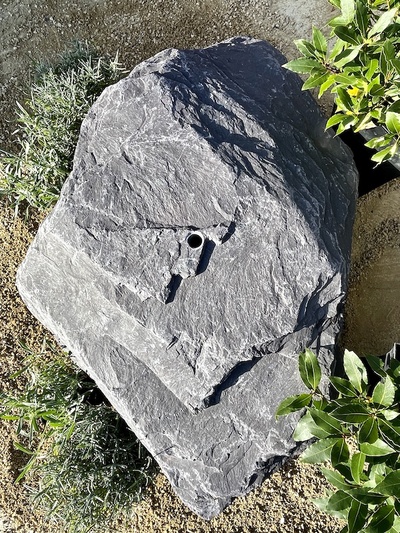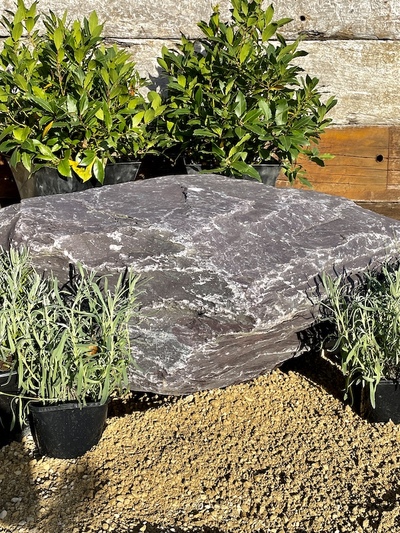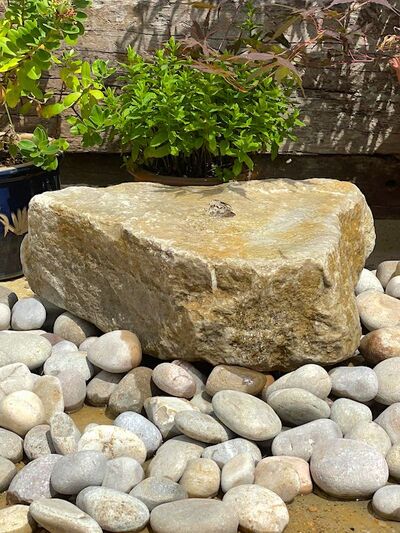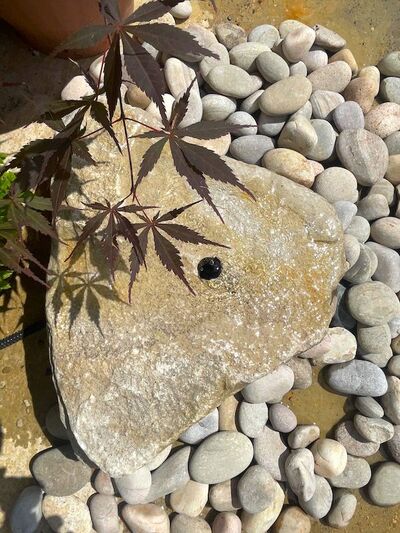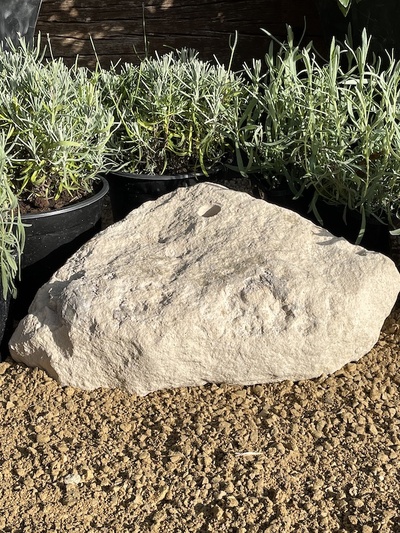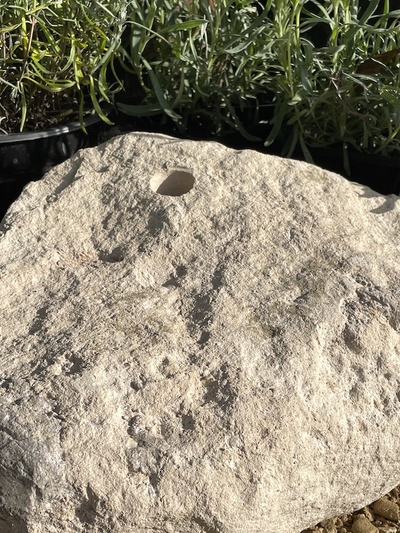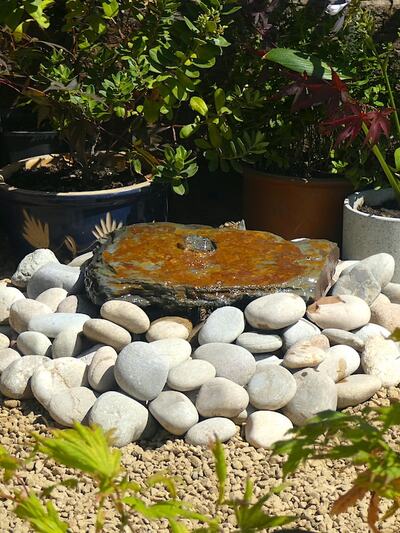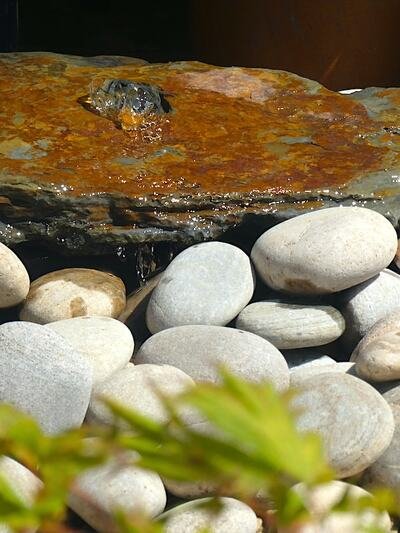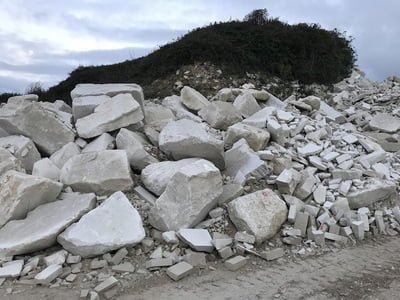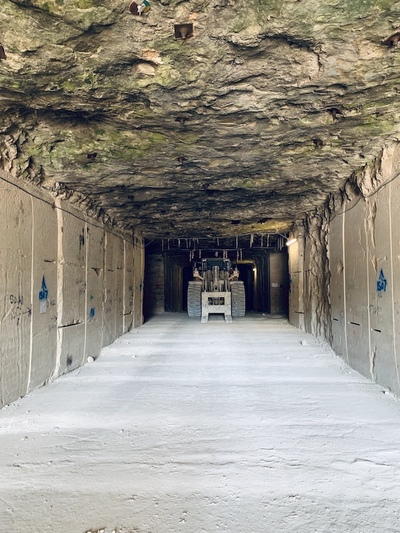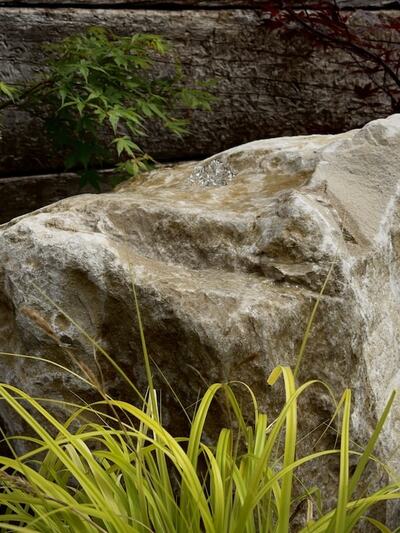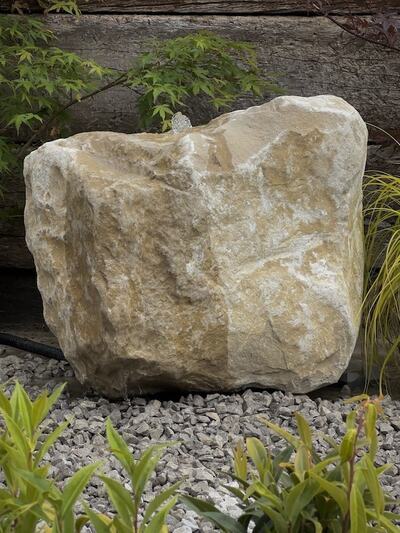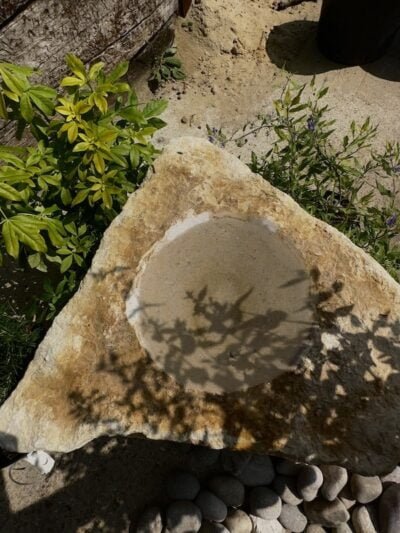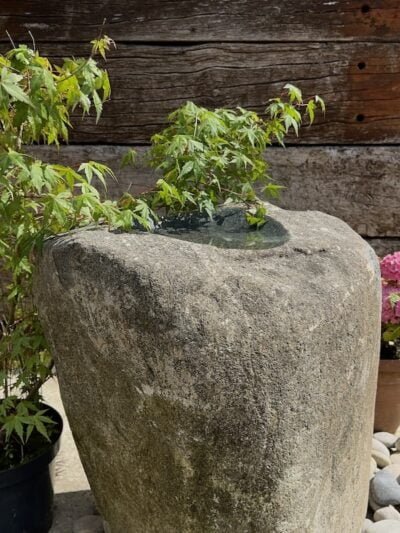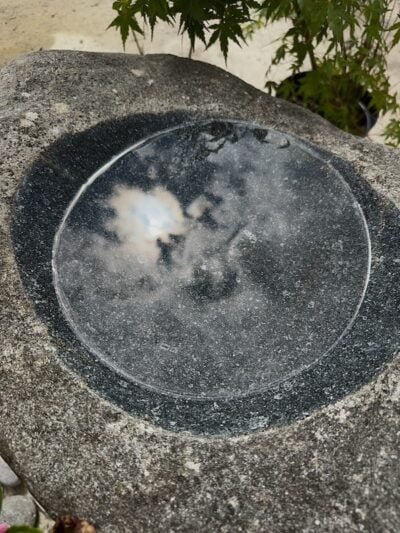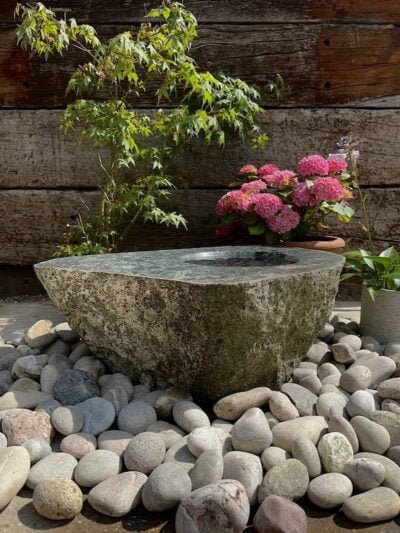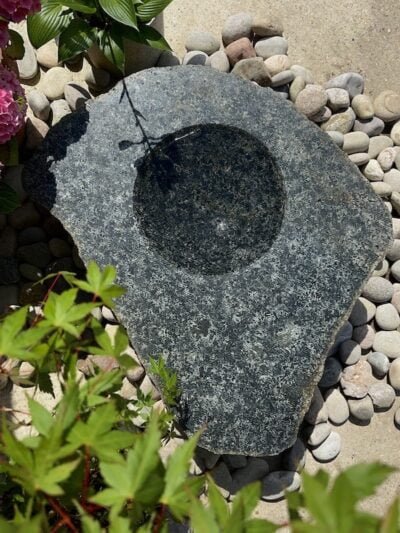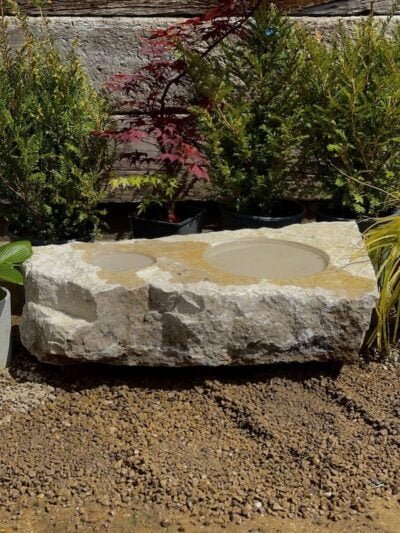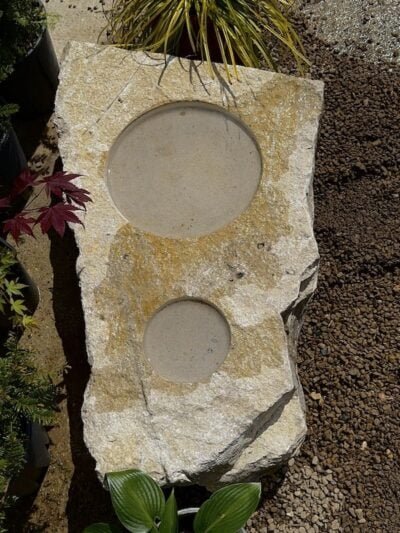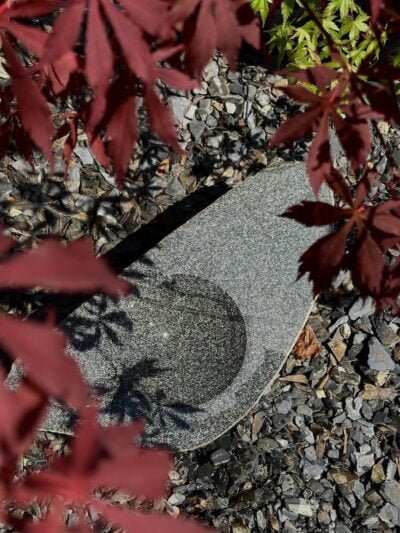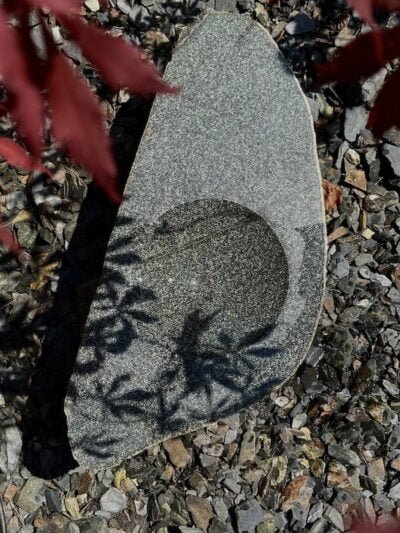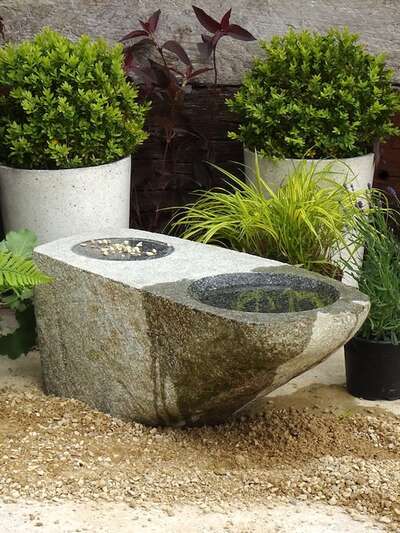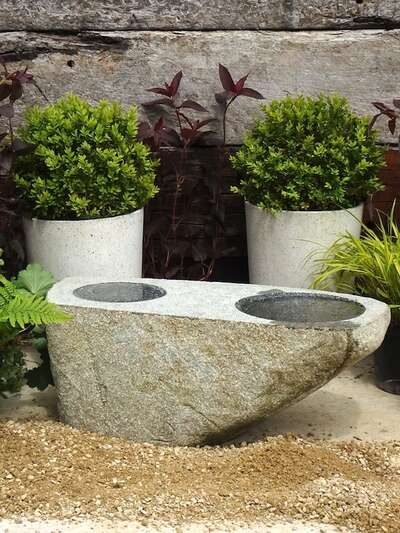Tsukubai Wash Basin
A tsukubai is a traditional Japanese stone water basin, often found in Japanese gardens or at tea houses, especially those associated with the tea ceremony (chanoyu). The word “tsukubai” (蹲踞) translates to “crouch” or “stoop,” reflecting the action of bending down to use the basin. Visitors would crouch to purify their hands and mouths by rinsing with the water from the tsukubai before entering a tea room or sacred space.
Key features of a tsukubai:
- Design: Tsukubai are typically made from natural slate or stone, often with a simple, rustic look, reinforcing a connection to nature. They are usually set low to the ground, encouraging users to physically bend, which is symbolic of humility and respect.
- Water Source: Water continuously flows into the basin, often fed by a water spout or bamboo pipe called a kakei. The slow, steady flow of water enhances the tranquility of the surrounding space. Often the water is recycled and does not need a constand feed. The sound creates a calm and relaxing environment.
- Symbolism: In Zen Buddhism and the tea ceremony, purification of the body and mind is an important practice. The tsukubai represents this purification, preparing guests both physically and spiritually. It also increases the biodiversity of your garden or landscape.
- Inscription: Some tsukubai, particularly those in famous temples or tea gardens, bear an inscription. One of the most famous examples is the tsukubai at the Ryoan-ji temple in Kyoto, which has a kanji inscription around the edge, interpreted as a Zen proverb: “I learn only to be contented” (吾唯足知 – ware tada taru wo shiru). This is only possible on slate or stone with a fairly flat surface or edge.
- Surrounding Elements: Tsukubai are often set within a carefully arranged space with varied size stones, moss, and sometimes bamboo to create a harmonious and meditative setting. The simplicity and balance of these elements reflect the principles of wabi-sabi, the appreciation of imperfection and impermanence.
In modern landscaping, tsukubai are still used to evoke a sense of calm and contemplation. Thesae take many different forms, sizes and structures. Material choices are key aswell to choosing the right design that will work for your garden. Below are some ideas using Purbeck Stone which has a natural earthy tone. An alternative choice is world famous Welsh Slate.
Tsukubai Wash Basin TWB01 was designed for a client incorporating the bowl and bamboo spout into a single large feature stone.

Tsukubai Wash Basin TWB02 followed this design and had the added bonus feature of ledges and overhangs on the runway part of the stone. This has only recently been completed and is awaiting photography.

We have a number of designs planned but if you would like to customise your own design then please do not hesitate to contact us. We can carve out the bowls in a range of sizes, varying from 32mm upto 600mm diameter with machine cores, or we can can chisel to your required size and depth.
Available Boulders on the website, some of which can be converted into water bowls.
Alternative water bowl design options available on the website include


